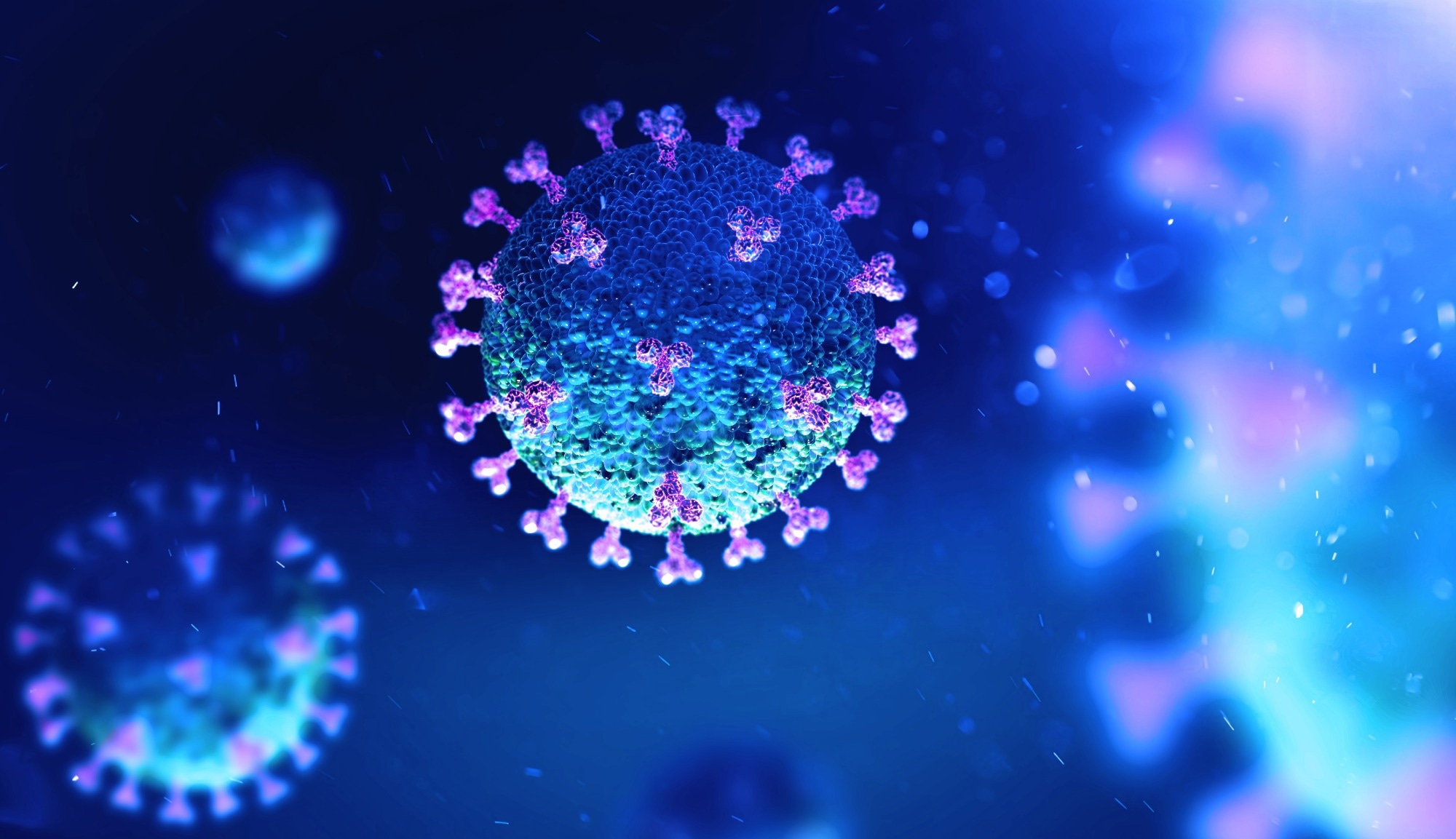In a recent study posted on Preprints with the Lancet*, researchers investigated the association between air quality and risk of severe acute respiratory syndrome coronavirus 2 (SARS-CoV-2) infection using serological data from 10,489 participants of the COVIDENCE UK, a large population-based cohort study.
 Study: Long-Term Air Pollution Exposure and Risk of SARS-CoV-2 Infection and COVID-19 Severity: A UK-Wide Cohort Study (COVIDENCE UK). Image Credit: Andrii Vodolazhskyi/Shutterstock.com
Study: Long-Term Air Pollution Exposure and Risk of SARS-CoV-2 Infection and COVID-19 Severity: A UK-Wide Cohort Study (COVIDENCE UK). Image Credit: Andrii Vodolazhskyi/Shutterstock.com

 *Important notice: Preprints with The Lancet publishes preliminary scientific reports that are not peer-reviewed and, therefore, should not be regarded as conclusive, guide clinical practice/health-related behavior, or treated as established information.
*Important notice: Preprints with The Lancet publishes preliminary scientific reports that are not peer-reviewed and, therefore, should not be regarded as conclusive, guide clinical practice/health-related behavior, or treated as established information.
Background
A study from the early days of the coronavirus disease 2019 (COVID-19) pandemic reported the associations between short-term exposure to particulate matter (PM2.5) and the risk of COVID-19 in some parts of Italy. Over time, many studies favored such associations more between short-term exposures, and to a lesser extent, between long-term pollutant exposures with increased COVID-19 morbidity and mortality.
These associations seem biologically acceptable as air pollution increases tissue inflammation, and damage, predisposing exposed people to respiratory infections-associated immunopathology.
In the first five months of 2020, i.e., when the COVID-19 pandemic began, England topped all-cause mortality in Europe, which made it one of the countries most severely harmed by the pandemic. In addition, over 30,000 premature deaths occur annually in England due to poor air quality, which makes it a highly apt location to examine the effects of air pollution on COVID-19.
About the study
In the present study, researchers invited those COVIDENCE UK participants who were recruited between May 1 and November 2, 2020, to study the effects of air pollution on COVID-19. These participants had not received a SARS-CoV-2 vaccine and readily agreed to give a dried blood spot sample for serology testing between November 6, 2020, and April 18, 2021.
First, they estimated annual average nitrogen dioxide (NO2) and PM2·5 concentrations at each participant’s residential postcode centroid for 2015–19 at high-resolution (25m × 25m).
Next, the team determined semi-quantitative antibody titers in dried blood spot eluates via an enzyme-linked immunosorbent assay (ELISA) that measured IgG/A/M responses against the SARS-CoV-2 spike (S) protein.
The study had three outcomes; first, the presence versus absence of antibodies against SARS-CoV-2; second, antibody titers in seropositive participants, a continuous outcome; third, COVID-19 severity, a two-level variable among seropositive ‘asymptomatic’ and ‘symptomatic’ participants.
Using single and bi-pollutant models, the team assessed the association of exposures to NO2 and PM2·5 with COVID-19 severity among seropositive participants.
Additionally, they used restricted cubic spline analysis to examine the shape of the dose–response relationship between long-term exposure to air pollution and seropositivity in multivariable-adjusted models and tested their linearity using the Wald test.
The team applied logistic regression models to estimate odds ratios (ORs) with 95% confidence intervals (CIs). Likewise, they used linear regression models with robust standard errors (SEs) to estimate geometric mean ratios (GMRs) and 95% CIs for log10-transformed antibody titers among SARS-CoV-2-seropositive participants.
Furthermore, the team had information on several alleged risk factors for SARS-CoV-2 infection, including sociodemographic, occupational, and lifestyle factors, diet, pre-existing medical conditions, and prescribed medications through COVIDENCE UK data.
Results
In the COVIDENCE UK study, 11,175/19,981 participants provided serology data; however, in this study, the researchers included data from only 10,489 participants who stayed in the same postal address till 2020.
Of these, 1,621 tested positive for SARS-CoV-2 antibodies, and their average to NO2 and PM2·5 in five years was 18·6 μg/m3 and 9·3 μg/m3, respectively, with NO2 and PM2·5 Pearson’s correlation of 0.63. The median age of the study participants was 62·3 years, 70·3% were female, and ~85% resided in cities and towns.
For NO2, the authors noted no association between increasing levels and the risk of SARS-CoV-2 seropositivity. Despite no dose–response pattern, seropositivity risk increased by 25-30% from the third quintile (NO2 ≥15·8 μg/m3) onwards. For PM2·5, compared to the bottom quintile (3·1– 8·5 μg/m3), the risk for the PM2·5 levels between 10·3–15·7 μg/m3 was 30% higher.
The bi-pollutant model showed the same positive associations, albeit with slightly lower ORs than the single pollutant models. The results of the crude model were slightly attenuated too. Restricted cubic spline analysis showed a non-linear relationship between air pollution and seropositivity, especially PM2·5 (p-value=0·12).
A per-unit increase in NO2 increased antibody titers by 0·4%, but no such association existed between PM2·5 and antibody titers.
Furthermore, the association between NO2 and PM2·5 levels and symptom severity did not reach statistical significance.
Conclusions
Overall, the study findings showed a statistically significant positive association between long-term NO2 and PM2·5 exposure and SARS-CoV-2 infection risk, as assessed by seropositivity, in a UK-wide cohort.
Given SARS-CoV-2's ability to mutate to form new pathogenic variants and transmit via air, it remains a global public threat. It highlights the population-level policy implication of the current work. Long-term reductions in particulate pollutants are likely to reduce transmission and severity of SARS-CoV-2 and other respiratory viruses, e.g., influenza.
Thus, the World Health Organization (WHO) has outlined the health benefits of air quality improvements beyond the prevention of respiratory viral infections. Nations should set and achieve stricter limits for air pollutants and air quality improving interventions to minimize the spread of non-communicable diseases, decarbonization, and avert climate change.

 *Important notice: Preprints with The Lancet publishes preliminary scientific reports that are not peer-reviewed and, therefore, should not be regarded as conclusive, guide clinical practice/health-related behavior, or treated as established information.
*Important notice: Preprints with The Lancet publishes preliminary scientific reports that are not peer-reviewed and, therefore, should not be regarded as conclusive, guide clinical practice/health-related behavior, or treated as established information.